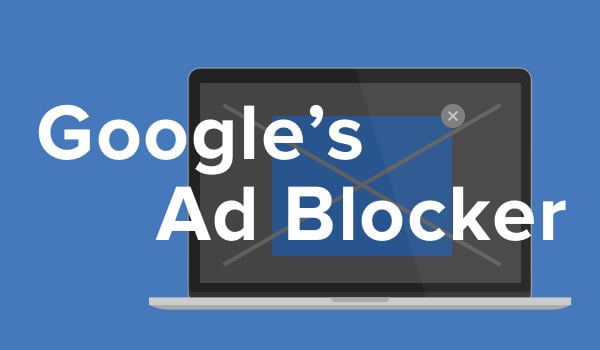
What You Need to Know About Google’s New Ad Blocker

Google announced its plans to release an ad filter for Chrome next year. Although it may sound counterintuitive for a company who makes most of its revenue from advertising to block ads, Google has a solid plan.
Specifics have not been released by Google yet, but Senior Vice President of Google, Sridhar Ramaswamy, states that their goal is to support websites and users by making online ads less annoying to “maintain a sustainable web for everyone.” It will work on both mobile and desktop and follow what the Coalition for Better Ads refer to as “Better Ads Standards.” It is important to note here that Google is a primary member of the Coalition for Better Ads — and that this will most certainly give Google an unprecedented amount of power over advertisers and publishers.
What are “Better Ads Standards”?
The Better Ads Standards are based off of data gathered from over 25,000 users tested on both desktop and mobile interfaces. Ads that did not make the cut for a “good” experience were:
The Better Ads Standards are based off of data gathered from over 25,000 users tested on both desktop and mobile interfaces. Ads that did not make the cut for a “good” experience were:
- Ads with sound
- Popup ads
- Ads that cover content with a countdown
- Large, sticky ads
- Flashing, animated ads
- Auto-playing videos
- Full-screen scrollovers
Why we should be skeptical.
No matter your opinion of ad blockers, there are a few red flags to take note of with Google’s newest business venture:
- Chrome’s Browser Share — Chrome currently holds 54% of desktop and mobile browser share, meaning this new ad blocker will, by default, be enabled for a significant majority of internet users.
- Google’s relationship with ad blockers — Google has already been paying off ad blockers to keep its own ads visible, offering companies 30% of their advertisement revenue.
- Google’s relationship with other advertisers — by positioning themselves as the gatekeepers of what constitutes acceptable advertising, Google is giving themselves (as the world's largest advertising company) what might constitute an unfair advantage over their competition.
- Google’s relationship with publishers — With this new ad blocker, Google is including an option for visitors to pay websites that they’re blocking ads on, through a program it’s calling Funding Choices. Publishers will have to enable support for this feature individually and it would guarantee them a revenue stream, either through charging consumers for an ad-free experience, or from the ads themselves.

